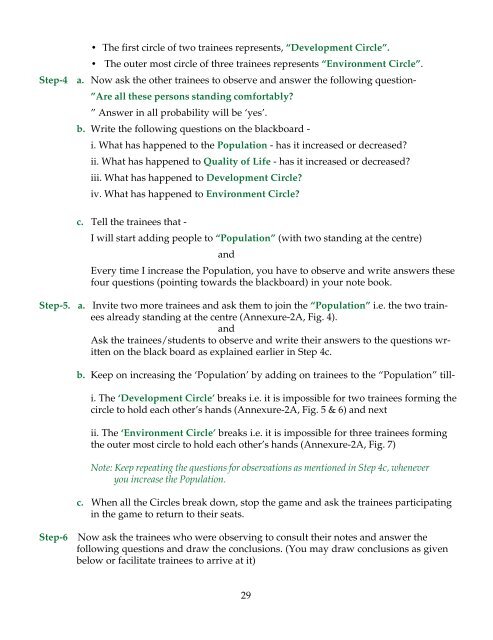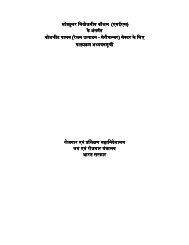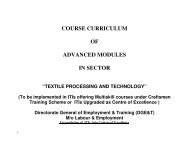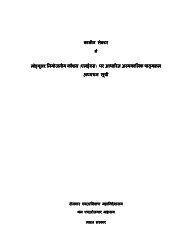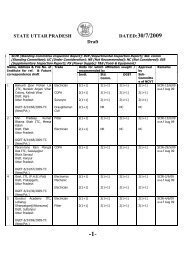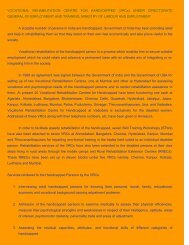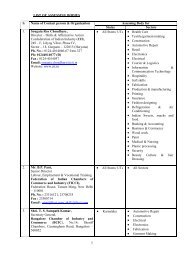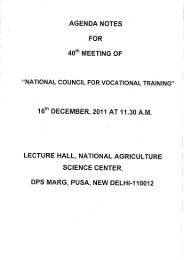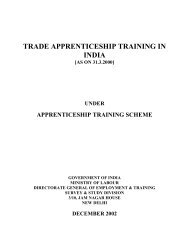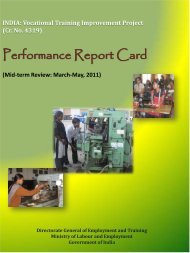Population Education In Vocational Training Programme
Population Education In Vocational Training Programme
Population Education In Vocational Training Programme
You also want an ePaper? Increase the reach of your titles
YUMPU automatically turns print PDFs into web optimized ePapers that Google loves.
Step-4<br />
• The first circle of two trainees represents, “Development Circle”.<br />
• The outer most circle of three trainees represents “Environment Circle”.<br />
a. Now ask the other trainees to observe and answer the following question-<br />
”Are all these persons standing comfortably?<br />
” Answer in all probability will be ‘yes’.<br />
b. Write the following questions on the blackboard -<br />
i. What has happened to the <strong>Population</strong> - has it increased or decreased?<br />
ii. What has happened to Quality of Life - has it increased or decreased?<br />
iii. What has happened to Development Circle?<br />
iv. What has happened to Environment Circle?<br />
c. Tell the trainees that -<br />
I will start adding people to “<strong>Population</strong>” (with two standing at the centre)<br />
and<br />
Every time I increase the <strong>Population</strong>, you have to observe and write answers these<br />
four questions (pointing towards the blackboard) in your note book.<br />
Step-5. a. <strong>In</strong>vite two more trainees and ask them to join the “<strong>Population</strong>” i.e. the two trainees<br />
already standing at the centre (Annexure-2A, Fig. 4).<br />
and<br />
Ask the trainees/students to observe and write their answers to the questions written<br />
on the black board as explained earlier in Step 4c.<br />
b. Keep on increasing the ‘<strong>Population</strong>’ by adding on trainees to the “<strong>Population</strong>” tilli.<br />
The ‘Development Circle’ breaks i.e. it is impossible for two trainees forming the<br />
circle to hold each other’s hands (Annexure-2A, Fig. 5 & 6) and next<br />
ii. The ‘Environment Circle’ breaks i.e. it is impossible for three trainees forming<br />
the outer most circle to hold each other’s hands (Annexure-2A, Fig. 7)<br />
Note: Keep repeating the questions for observations as mentioned in Step 4c, whenever<br />
you increase the <strong>Population</strong>.<br />
c. When all the Circles break down, stop the game and ask the trainees participating<br />
in the game to return to their seats.<br />
Step-6<br />
Now ask the trainees who were observing to consult their notes and answer the<br />
following questions and draw the conclusions. (You may draw conclusions as given<br />
below or facilitate trainees to arrive at it)<br />
29


